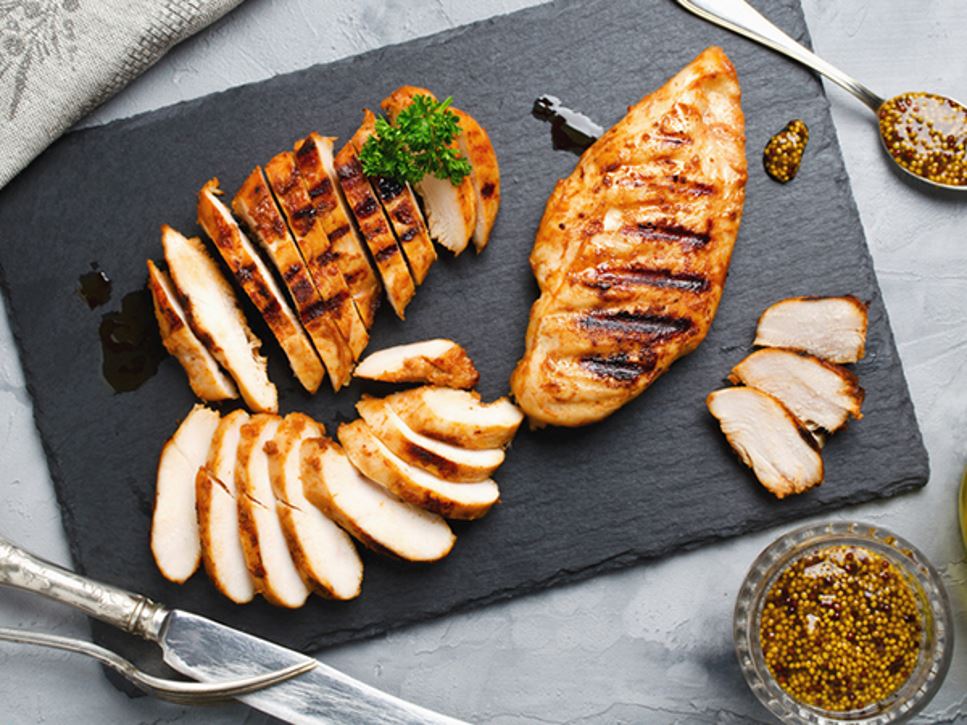For more than a decade, the preference for poultry, especially chicken, has been increasing in the United States. Eating away from home more often has been cited as one reason. For others, the choice was made for health reasons. Poultry (without the skin) is often recommended as a substitute for red meat, since it is lower in saturated fat. Although leaner cuts of beef and pork are available.
There are many options when it comes to chicken. It's sold whole or in parts as chicken breasts, thighs, or wings and is available skinless and boneless.
Price can be an influence when choosing a thigh over a breast, but taste and how the chicken is prepared rank high as well.
Tastier...But Is It Healthier?
Some people prefer the taste of dark meat over white meat and consider it to be more tender and flavorful.
Both chicken thighs and breasts are good sources of lean protein. However, they differ in the amount of calories, fat and saturated fat. For example, a 3-ounce skinless, chicken breast provides about 140 calories, 3 grams of total fat and just 1 gram of saturated fat.
The same amount of dark chicken meat without the skin would provide three times the amount of fat for a total of 9 grams of fat, 3 grams of saturated fat and 170 calories. This difference may not seem like much, but depending on the portion size it can add up.
Another option is to choose dark turkey meat, which has fewer calories and fat compared to a chicken thigh. A 3-ounce portion has about 134 calories, 5 grams of total fat and 1.5 grams of saturated fat.
It's also a good idea to look at the Nutrition Facts Label. Some poultry products are injected with salt, which helps to keep it moist. Most Americans get too much salt from the foods they eat, so finding ways to reduce sodium by reviewing ingredients and the Nutrition Facts Label can help.
Cooking Matters, Too!
Of course, how the poultry is prepared will also make a difference in the amount of calories and fat. Chicken and turkey can be baked, grilled, roasted or fried; seasoned, stuffed or coated with breading. Baking, grilling and roasting are considered healthier options, so look for these descriptions when eating out and limit all types of fried and deep fried foods, including poultry. At home, keeping the skin on while cooking will help keep chicken and turkey moist and removing the skin before eating will help reduce calories and saturated fat.
Keep it Safe
No matter which type of poultry you choose to buy and prepare at home, remember to handle it properly. Raw chicken and turkey should not be rinsed before cooking, but be sure to wash your hands with soap and water for at least 20 seconds before and after handling raw poultry.
Chicken and turkey that is purchased frozen should be thawed on the bottom shelf of the refrigerator. Use separate utensils, containers, and cutting boards for the raw and cooked foods. All poultry, regardless of the cooking method, should be cooked to a minimum internal temperature of 165 degrees Fahrenheit. A thermometer inserted into the thickest part will help determine if it's reached the appropriate temperature.
Storing foods safely is also important and will help to reduce the risk of foodborne illness. Perishable foods, like poultry, should be refrigerated. After grocery shopping or meals, refrigerate poultry within two hours or within one hour if the temperature is above 90 degrees. The same is true for leftovers when eating out, and they should be reheated to 165° F and eaten within three to four days.
Find a Nutrition Expert
Looking for credible nutrition information and recommendations? The Academy of Nutrition and Dietetics' network of credentialed food and nutrition practitioners are ready to help!
